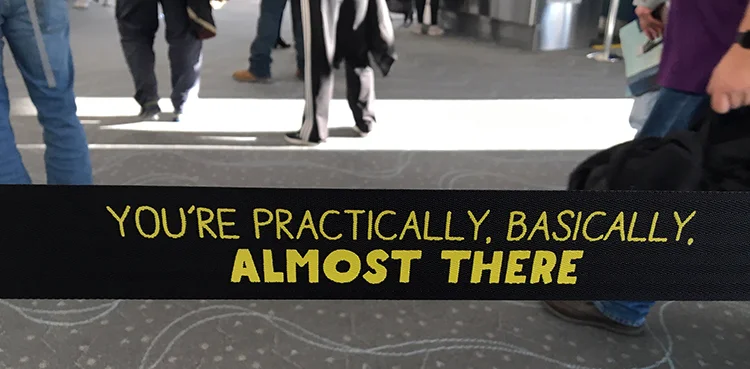The satisfaction of making your own simple weaving equipment
I come from a family of makers, so the idea of making my own loom is not totally foreign to me. However, my stash of woodshop tools is pretty limited. I have a mitre box and saw for making tapestry hanging bars, a few small wrenches and screwdrivers, and a motley collection of screws and wire.* Oh, and not long ago I added a big pipe wrench. If your guess is that I bought it to make pipe looms, you'd be wrong. It had something to do with a dye stove and a propane tank... I do occasionally use it to tighten or loosen the galvanized threaded pipe on my small loom and one day I'll make a large pipe loom and use it to tighten large nuts.
Copper pipe loom and PVC jig made by Rebecca. Those copper pipe joints are glued and so far they've stayed put!
Over my years of weaving and teaching tapestry, I've seen many people make looms but it took me awhile before I believed I could do that myself. Turns out it isn't hard and I didn't have to buy a bigger toolbox to do it.
I wrote a blog post some time back about making copper pipe looms. You can see that post HERE.
But of course you don't have to know how to solder to make a copper pipe loom. I just thought learning this new skill might serve me well, though beyond making looms I can't think how. You can use tap screws or glue to hold the joints together. Apparently the glue will fail especially if the loom changes temperature a lot, but you could just keep a tube of it in your weaving kit if you're traveling with it. (Car temperature changes seem like that would be a time the expansion/contraction of the metal might make the glue fail. Solder will also fail in these conditions.)
I have also shown how to make a galvanized pipe loom HERE.
Complete instructions for these two looms and others are in the new online course Fringeless which is taught mostly by Sarah Swett with some leading questions and insertions by me. (Hint: the early bird discount ends July 31st, so you'll want to jump into the course this week. You can access it any time in the future for as long as you'd like.)
You don't have to make a loom for the class--a Mirrix will work just fine. But if you are inspired to make just the loom you want, I'm here to tell you that you can do it. You only need a few simple tools and a hardware store.
Another question I've gotten a fair bit when talking about the new course is about making a jig.
Do you have to make a jig?
Yes and no. This technique does require some sort of jig but one can be made out of sticks and string or straps. If you want to make pieces that are the same size, then I recommend spending a little time making a PVC jig. One can be made with one simple cutter tool and if you make a few different sized pieces, you can have a wide variety of tapestry sizes. We'll show you how to do this in the class. And if you really don't want to dive into jig-making, Magpie Woodworks is making wooden and PVC jigs for sale HERE.
When I wanted to start doing four-selvedge weaving a few years ago, I figured out how to make a jig out of PVC pipe. A jig is simply something that holds the main warp steady while the supplemental warp is put on and it has to come apart somehow so it can slide out when the warps are complete. PVC is a great material for this because it is easily cut, it is cheap so I can have pieces of many different sizes, and it goes together just with friction and holds itself well for the warping process. (In fact you can make a whole loom out of larger PVC pipe and it just stays together with friction--no screws, solder, glue, etc to mess with. Plans in the course.)
There is something immensely satisfying about making your own equipment. It inspires confidence. Give it a try.
* There might also be a rubber mallet. Because IKEA.

